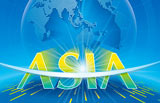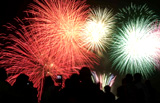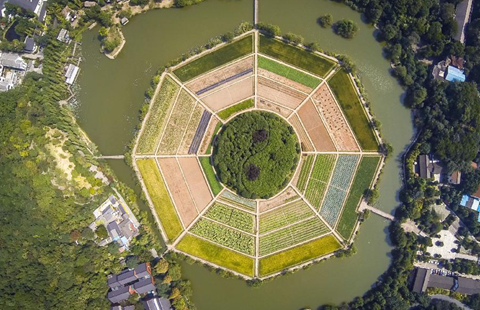Putting the fizz back into domestic soda market
Updated: 2015-06-10 08:14
By Zhu Wenqian(China Daily)
|
||||||||
When it comes to fizzy drinks, the Beibingyang brand is steeped in history after being rolled out in 1936 from an old ice-making factory in Beijing.
Its famous orange soda has always had a faithful following, but now it is going through a sales renaissance since being relaunched in 2011.
Literally meaning Arctic Ocean, the Beibingyang soda company dominated the market in the 1980s before it went into a joint venture with the United States-based PepsiCo Inc in 1994. Production was halted and the popular fizzy drink disappeared off the shelves of Chinese stores.
But four years ago, the Bei-bingyang Co dissolved its partnership with the US drinks giant and brought back its best-selling orange soda.
"With the trend of attracting foreign investment, Beibingyang formed a joint venture with PepsiCo. Later PepsiCo became a shareholder of the company, and stopped producing Beibingyang soda," Guo Honglei, assistant to the general manager at the Beibingyang Co, said.
"But now it is back and we are doing well. Many stores cannot keep enough bottles of the soda in stock with summer approaching," Guo added. "We sell at around 3.5 yuan (56 US cents) to 4 yuan a bottle at various neighborhood stores in Beijing, including those at embassy residential compounds."
Beibingyang has one processing and bottling plant in the capital and employs more than 100 workers. The company claims that it produces the only carbonated beverage made from natural oranges in Beijing.
The soda also has an ultra-low sugar content, which helps in marketing the product, and is generally sold in convenience stores. This allows the bottles to be returned after use.
But as sales of the fizzy drink flourish, it can now be found in popular restaurants, cinemas, bars and clubs, selling for as much as 16 yuan a bottle.
Last year, Beibingyang posted annual sales revenues that were 100 percent higher than 2013 without disclosing the full figures.
"In 2014, the brand even sold out of stock," Guo said. "The sales volume of Beibingyang went beyond the total sales of Coke and PepsiCo in glass bottles in Beijing."
After the orange soda drink started appearing again, nostalgia kicked in and older Beijingers rushed out to buy it. But younger consumers are now getting a taste for the distinctive flavor.
Quick to recognize a business opportunity, the company decided to introduce other fruity blends, such as loquat and plum, to attract this new generation of customers. And it proved extremely successful.
Li Yi, 26, a white-collar worker employed at a research agency affiliated to a State-owned petroleum company in Beijing, is a big fan of the fizzy drink because it is not too sweet. It is also a healthier alternative to other sodas.
"I can remember my childhood when I started drinking Beibingyang," Li said. "Now it comes in more flavors and it is cheaper than many other drinks such as milk tea."
With an iconic polar bear logo, the soda's classic glass bottle invokes bygone memories for the company's loyal customers. But due to transportation problems, the brand recently introduced drinks in pull ring-top cans, which are mainly sold in supermarkets.
"We purchased new production lines to double the capacity from our Beijing plant and we anticipate increased sales this year," Guo said.
"The company plans to build another manufacturing base and a sales process center somewhere else in China in less than a year, so we can expand our domestic market," he added.
|
Beibingyang soda sold at a stand in Nanluoguxiang, Beijing. The brand was founded in 1936 and is famous for its orange soda.Provided To China Daily |
(China Daily USA 06/10/2015 page16)
- Exhibition displaying anti-Japanese war archives opens to public
- Key IS leader killed in Lebanon
- British PM hails UK-China relations
- Vice-premier promotes food sector ties with Italy
- Myanmar's NLD party leader leaves for her first visit to China
- Vietnam's top party leader expected to visit US next month

 US dollar inspired art to be auctioned at Sotherby
US dollar inspired art to be auctioned at Sotherby
 Coffee shop where Premier Li met entrepreneurs
Coffee shop where Premier Li met entrepreneurs Cavs edge Warriors to take charge of finals
Cavs edge Warriors to take charge of finals
 Work hard, play hard - five ways to shake off exam stress
Work hard, play hard - five ways to shake off exam stress

Six co-investments by Jack Ma and Pony Ma

 Yes, we are waiting for our children
Yes, we are waiting for our children
 Chinese artist to be recognized at International Muse Awards
Chinese artist to be recognized at International Muse Awards
 2015 Apple WWDC kicks off in San Francisco
2015 Apple WWDC kicks off in San Francisco
Most Viewed
Editor's Picks

|

|

|

|

|

|
Today's Top News
G7 'ignores facts over South China Sea'
Obama weighs sending several hundred more US troops to Iraq
MSCI delays including China A shares in benchmark index
7 Chinese gay couples hold wedding ceremony in West Hollywood
New window on China
Prove hacking: experts
Amid tensions, top Chinese brass visiting US
Apple reveals plan to develop all-platform eco-system empire
US Weekly

|

|








